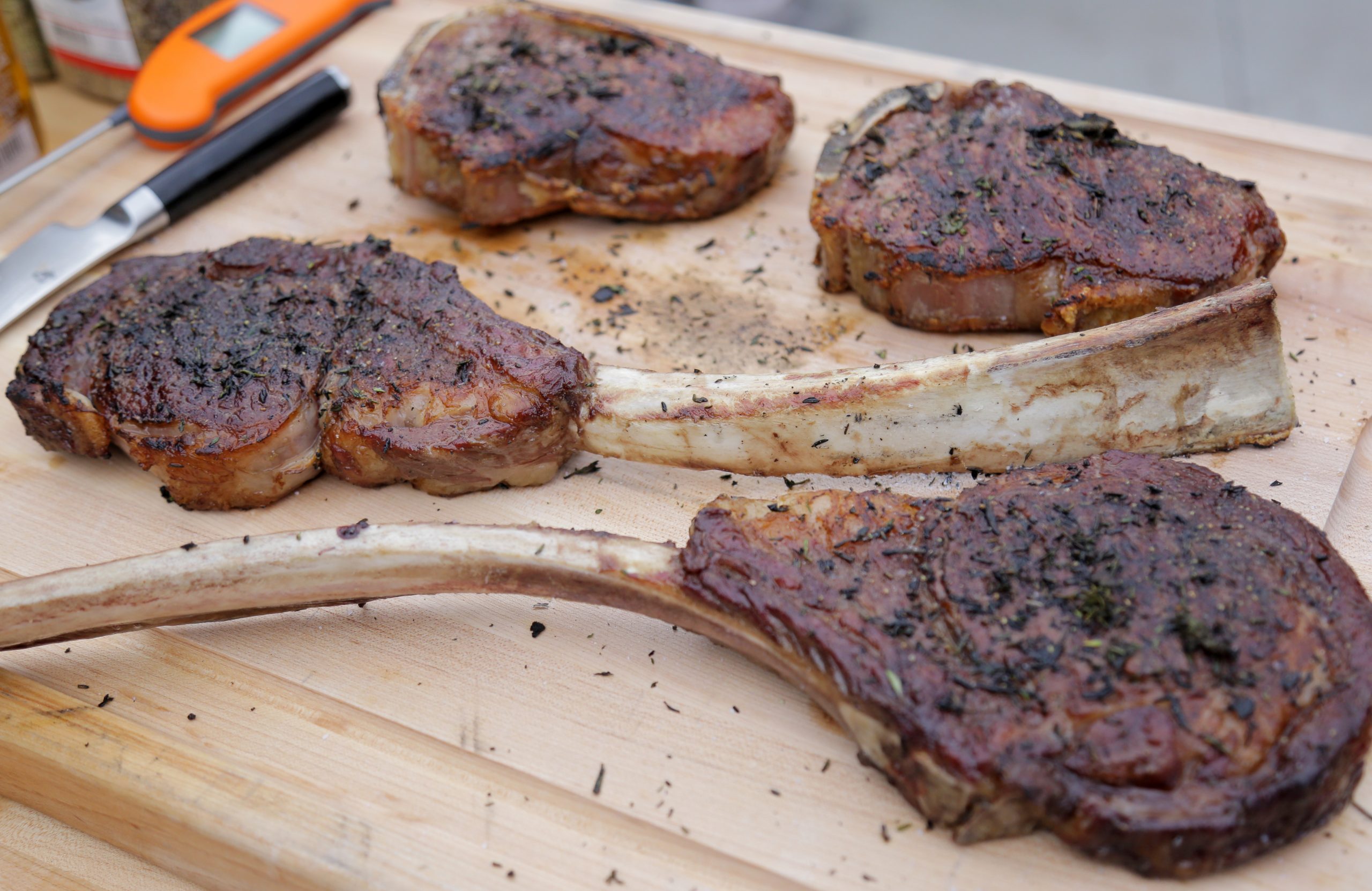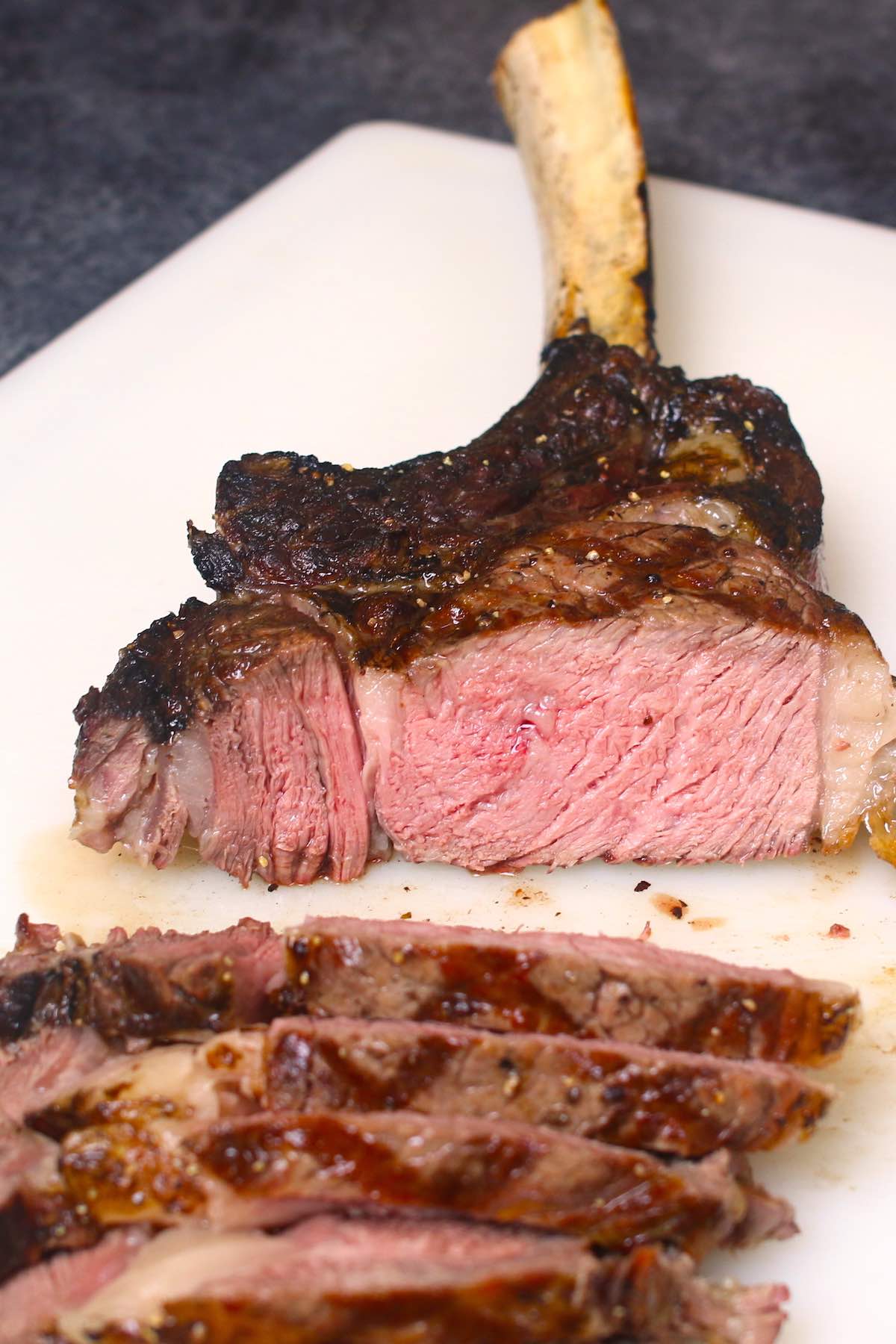

If you only leave an inch or two that would sometimes be called a “caveman steak” or bone-in-rib-steak. If you “French” or clean the entire bone, that would be considered the classic presentation. The first decision will be how much rib bone we want to leave on the steak. There are varying opinions on hanging and aging the meat, so I won’t be the final judge on what you decided to do regarding that, I’ll simply say that you want the carcass dry and clean and the silver-skin removed.

#Tomahawk steak recipe skin
Carefully field dress and skin the deer as soon as possible to reduce unwanted flavors. As with any meat processing, what is done to the carcass immediately after the kill is vitally important. The first thing to know is that a tomahawk steak is very simply a cross-section of the “backstrap” or loin of the deer, with a portion of the rib bone still attached. The following is a short photo presentation of the process that I use to turn a dead deer into a succulent and classy feast that may very well change your life forever! The reception of that first one was so overwhelmingly positive that it actually affected my visual perception of the world! From that moment on every deer that I saw was simply a rack of tomahawk steaks with legs! I was instantly obsessed and immediately began learning the steps to extract them on my own. Hesitant to mess things up, the first time I flopped a tomahawk steak on my grill it came from my favorite local butcher. Whatever you want to call it, I’ve been fascinated with trying them for myself ever since I first saw them cropping up on my Instagram feed. In beef it’s known as a bone-in-ribeye or “cowboy steak”, in deer it’s often called a “tomahawk steak” or “whitetail lollipop”. With the rise of social media, many of us have likely seen the presentation of a beautiful tomahawk steak. However, the satisfaction I’ve derived from carefully curating the transformation from field to plate has led me to dive ever deeper into the process, and in so doing I’ve gained a new and deeper appreciation for each step along the way. The thought of picking up a couple of boxes of professionally butchered and wrapped meat has always been appealing to me, so learning to do it myself has been a slow process. Let the steaks rest for 10 minutes before slicing.I’ve always been a little timid when it comes to processing my own meat.

Place the steaks on the resting butter and use a fork to spread the remaining butter over the steaks. Move the steaks to the direct-heat side of the grill and sear until the internal temperature reads 135 degrees F, 2 to 3 minutes per side. Set aside the remaining butter for the top of the grilled steaks. Do this before you get your steaks on the grill so that when they come off, you can set each steak on a spoonful of the butter. Spread one spoonful of the butter directly on your serving board underneath where each steak will be placed. Meanwhile, combine the butter, thyme, Worcestershire, a pinch of salt and some pepper in a small bowl. (The target grill temperature should be around 250 degrees F.) Cover and grill the steaks, flipping once, until the internal temperature reads 125 degrees F (10 degrees away from finished target temp), about 45 minutes to an hour. Start the steaks on the indirect heat side of the grill. Using a paper towel, wipe off any excess moisture and salt from the steaks. (The overall grill temperature should be 325 degrees F on the grill grates.) Preheat a grill for two-zone cooking with high heat on one side and no heat on the other side. Allow to come up to room temperature, about 2 hours. Remove the steaks from the refrigerator, then sprinkle on both sides generously with salt and place on a wire rack over a sheet pan.


 0 kommentar(er)
0 kommentar(er)
